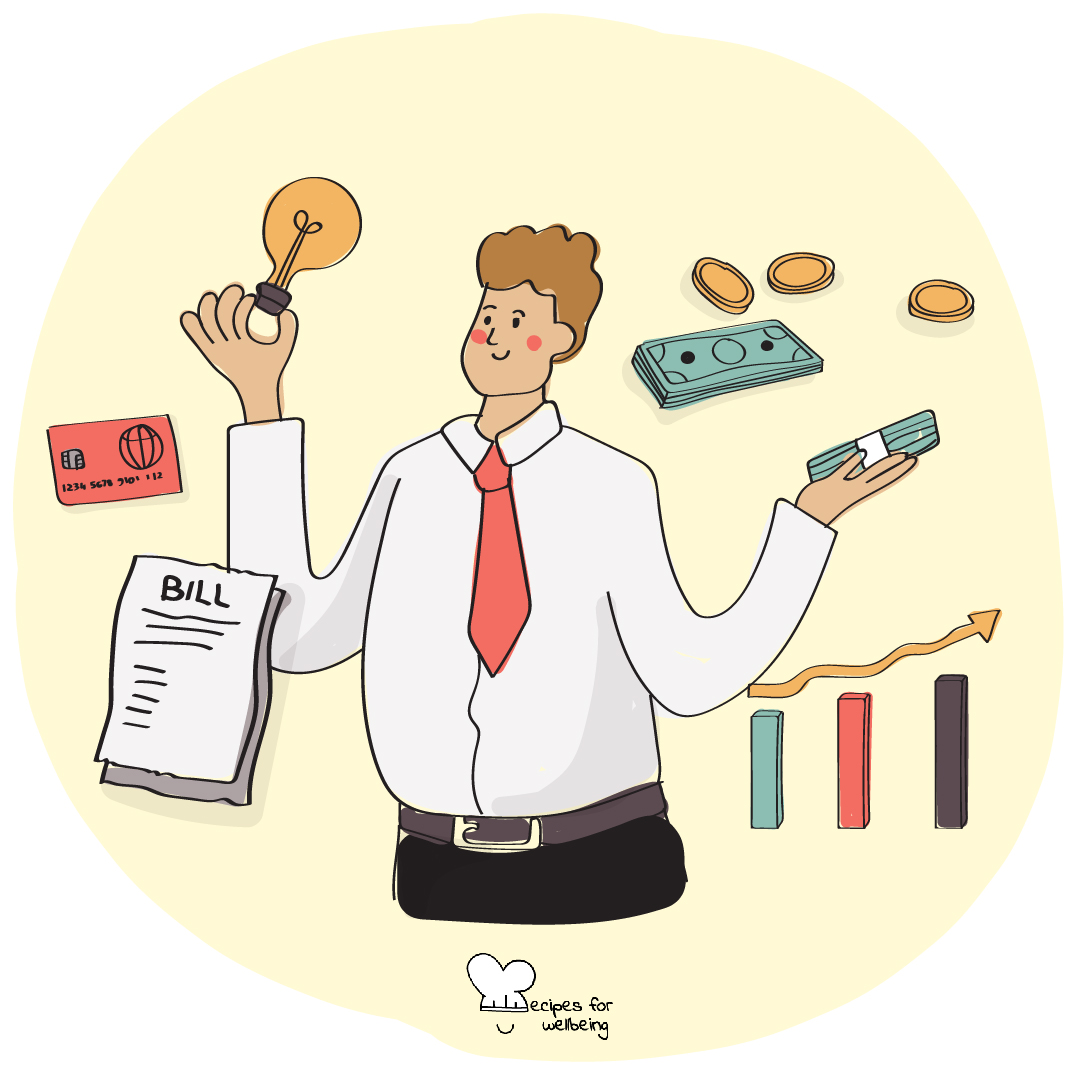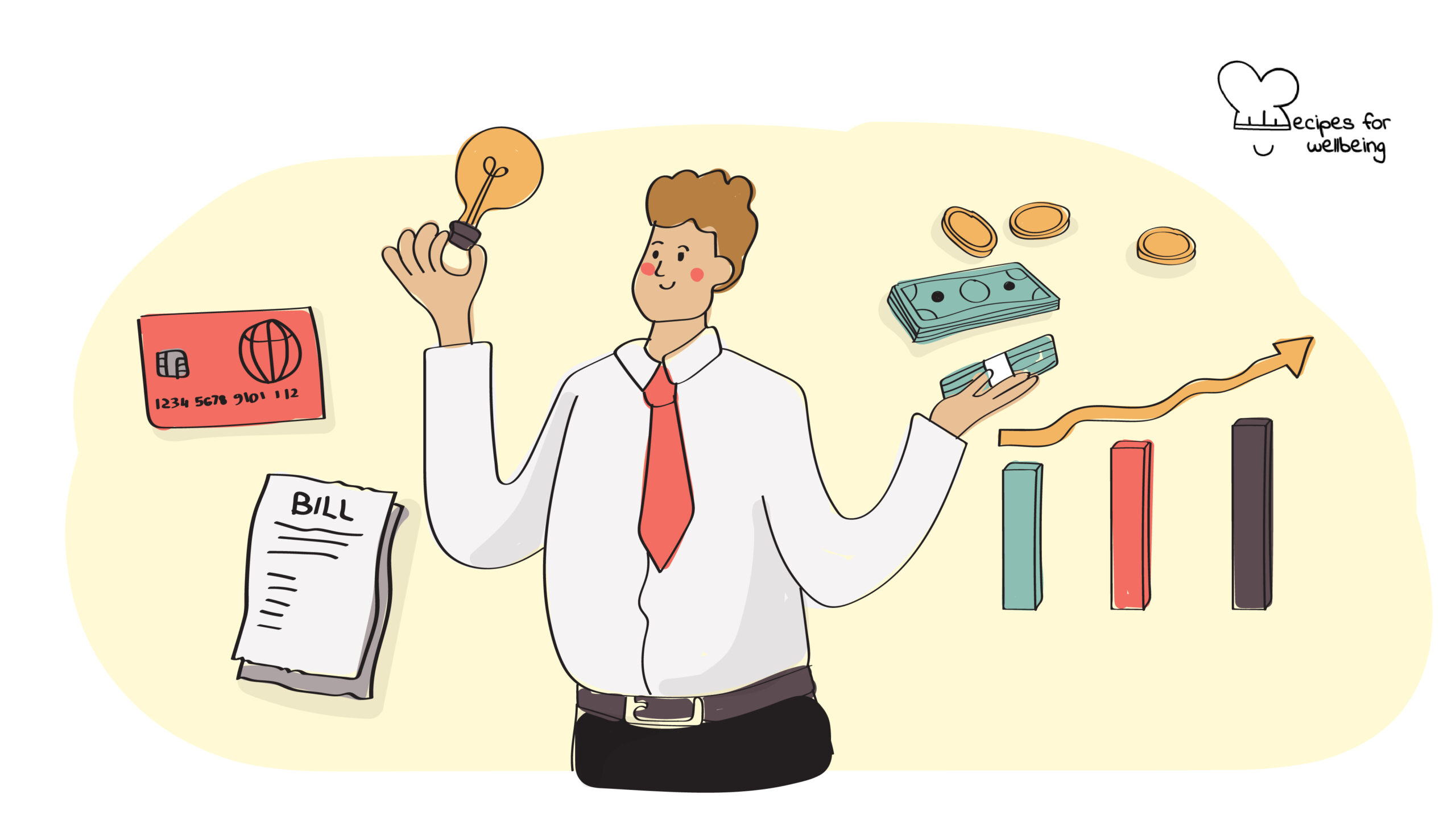
Genuine Wealth
The process by which banks create money is so simple the mind is repelled. Where something so important is involved, a deeper mystery seems only decent. ―John Kenneth Galbraith
👥 Serves: 26-40 people, 41+ people
🎚 Difficulty: Medium
⏳ Total time: 1 day
🥣 Ingredients: Work colleagues or community members, open-mindedness, and collaboration
🤓 Wholebeing Domains: Accomplishments, Community, Positive Emotion
💪 Wholebeing Skills: Ambition, Happiness, Honesty, Inclusion, Legacy, Non-extracting

Genuine Wealth
📝 Description
Introducing genuine wealth for wellbeing.
Traditionally, governments assess a majority of their success on their GDP (gross domestic product) output. GPD is the annual value of goods/services/products sold to measure economic activity. Similarly, many organisations focus on their bottom line, or financial performance, to measure their success. While these economic and financial measures are important, they fail to take into consideration other essential aspects that impact people’s happiness and wellbeing.
What if we looked beyond money metrics to measure progress and include more aspects that contribute to high quality of life?
Enter: genuine wealth.
The term Genuine Wealth was created by Mark Anielski, a Canadian wellbeing economist, author, consultant, and Adjunct Professor in both the School of Business, University of Alberta and the Bainbridge Island Graduate Institute.
Genuine Wealth is a way of measuring and managing the wellbeing and happiness of a community or organisation. This recipe helps organisational/community leaders evolve their understanding of wealth by accounting for more than just financial assets to include human, social, natural, manufactured, or physical aspects that are linked to individual and organisation’s values for a good life. Genuine Wealth is about accounting for the things that truly make life worthwhile.
This recipe has been adapted by our wellbeing content writer collaborator Marissa Del Mistro.
👣 Steps
Step 1 – Determine your definition of genuine wealth (2 hours)
Start by defining what genuine wealth means for your organisation or community. Knowing the ‘why’ will help you keep focused throughout this process.
Please note that there can be various definitions of what genuine wealth is. For instance, wealth may include professional wealth, such as education, leadership, ability to share ideas, or social-civic wealth, such as networking, political participation, cooperation, relationship with colleagues, and more. Wealth can mean many things to many different communities and organisations.
Arrange a convenient time for your team, service users, stakeholders,or community members to discuss the meaning and how your group would benefit from expanding your definition of wealth beyond capital.
Some questions you may wish to consider are:
- What does wealth and wellbeing mean to our organisation/community?
- How do we define wealth?
- How does one live a wealthy life?
- What are ways we can feel more wealthy on a daily/monthly/regular basis?
For additional inspiration, you can also make use of statistics and reports by similar organisations/communities.
Step 2 – Set up a genuine wealth accounting wellbeing check-up (1 hour)
Genuine wealth accounting can assist your organisation or community with identifying, measuring, and managing the things most important to your work/community. Consider this wellbeing check-up like a 360-degree medical check you would do at a doctor’s office.
This check-up will assess the following things:
- How is work?
- How wealthy is your organisation/community? How much of the wealth is in line with the definitions determined in step 1?
- Diagnose the overall wellbeing of your organisation/community including the social, environmental, and economic state.
- What does wealth sustainability mean to you?
- Examine the current and historical conditions of your organisation/community to determine whether genuine progress is being made in line with the organisation’s or community’s values, mission, principles, and dreams or possibilities for the future.
- Run a comparative analysis of similar organisations/communities to explore where your work stands out and where you could improve.
- What are your organisation’s or community’s biggest weaknesses?
- How are the quality and quantity of your networks that you work with regularly and how do you benefit? Does this need to be increased/decreased?
- Is the organisation’s or community’s work meaningful to service users or community members?
- How do the organisation’s employees or community members connect to the nature of the work? What do they find satisfying?
- What risks are there to the organisation’s or community’s liabilities?
Step 3 – Asset gardening (2 hours)
At this point, you can develop a strategic plan outlining the vision and mission, goals and outcomes, and specific strategies and activities to put in the work determined in step 1 and 2.
Make sure to work with everyone involved in your organisation/communities for adequate equal and effective representation. This step can be a powerful process that leads to change. For organisations, change may look like improved business plans, policies, and work life balance. For communities, it may look like changes in behaviour, improved wellbeing, and improved joy.
Wealth must be conserved, or “gardened” to ensure for the benefits of this change well into the future.
Step 4 – Report writing (1 hour)
The last step consists in writing a report (this could be a policy paper or a statement) which increases accountability and transparency. It ensures everyone involved in the process has access to what was determined in the first three steps. The idea here is to build a stronger, healthier, and more vibrant way to view wealth in work and quality of life from a much broader perspective.
This report and strategic plan need to be reviewed on a regular basis, every 6 to 12 months ideally.

